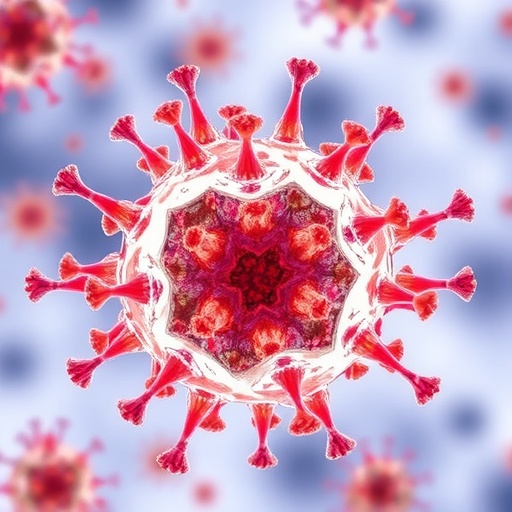
A recent study conducted by Weill Cornell Medicine and the New York City Department of Health and Mental Hygiene reveals critical insights into the naloxone kit distribution programs aimed at combating the opioid crisis in New York City. Published in the Journal of Urban Health on January 16, this research underscores the alarming need for effective opioid overdose reversal interventions within communities already impacted by drug-related challenges. With opioids, especially fentanyl, at the core of the crisis, understanding who is at risk and how to effectively distribute life-saving resources like naloxone is paramount.
The findings are particularly poignant given the context of New York City’s opioid epidemic. In 2017, fentanyl accounted for more than half of the overdose deaths in the city, a stark reminder of the potent danger posed by this synthetic opioid. The Health Department’s proactive approach in 2018, which included distributing over 100,000 naloxone kits and bolstering the number of overdose prevention programs to more than 300, indicates the city’s commitment to mitigating this public health emergency.
Within the year-long timeline of the study, the research focused on naloxone kit distribution from April 2018 to March 2019. A total of 79,555 kits were examined, with the analysis revealing that an impressive 97% of individuals who received these kits faced a high risk of opioid overdoses. These statistics depict not just the magnitude of the crisis but also highlight the critical necessity for such interventions to reach those who are most vulnerable.
Notably, while the recipients of naloxone kits showed minimal disparities along racial and ethnic lines, the study did identify particular communities that require additional support. Specifically, older Black men and Latino populations exhibited higher rates of opioid-related adversity. This revelation is crucial for health policymakers who must tailor their responses to address these variations effectively and ensure equitable distribution of resources.
The researchers behind the study emphasized the importance of evaluating naloxone distribution strategies. The goal is to identify gaps that may prevent high-risk individuals from accessing essential overdose prevention tools. Addressing the nuances of drug overdose dynamics is vital, especially in a city as diverse as New York, where different groups may be experiencing this crisis in varied ways.
Moreover, the findings suggest that overdose education and naloxone dispensing (OEND) programs need to be part of a broader, multifaceted approach to tackle the underlying causes of racial and ethnic disparities in overdose fatalities. This could include enhanced community outreach initiatives, tailored educational programs, and a deeper understanding of the socio-economic factors that contribute to the higher risks faced by specific populations.
A comprehensive approach could entail collaborations between health departments and community organizations to foster a more robust network of care and awareness. By integrating these efforts, the city can not only distribute naloxone kits but also simultaneously work on prevention strategies aimed at decreasing the overall incidence of drug overdose.
The role of fentanyl in this crisis cannot be understated. As a potent opioid, its presence in the illegal drug market complicates the landscape of substance use in urban settings. The interactions between fentanyl and other substances—sometimes unbeknownst to users—further highlight the need for comprehensive harm reduction strategies. Understanding these dynamics is essential for refining naloxone distribution programs and ensuring that education around its use is as comprehensive as possible.
Furthermore, the study accentuates the importance of ongoing research into naloxone efficacy and accessibility. As the landscape of opioid use continues to evolve, so too must the public health strategies employed to combat it. Continued investment in research will allow health officials to stay ahead of emerging trends and challenges in drug use, ultimately leading to more effective interventions.
Tacitly woven into the fabric of this research is a call to action for the scientific community, policymakers, and advocates. It emphasizes the need for sustained dialogue around the opioid crisis and encourages the development of solutions that are both innovative and inclusive of all communities impacted by this epidemic.
In conclusion, the study underscores the systemic nature of the opioid crisis exacerbated by factors such as race, economics, and urban infrastructure. The data presented serve as a reminder of the lives that hang in the balance and the need for an integrated response that not only focuses on drug intervention but also on education and societal support systems. As cities grapple with this ongoing emergency, understanding and responding to the disparities highlighted will be critical in moving toward effective solutions and healthier communities.
Subject of Research: Naloxone Kit Distribution and Its Impact on Opioid Overdose in New York City
Article Title: Insights from Naloxone Distribution: A New York City Study on Opioid Overdoses
News Publication Date: January 16
Web References: https://www.nyc.gov/site/doh/index.page
References: (Research supported by the National Institute of Drug Abuse, part of the National Institutes of Health)
Image Credits: (Image sources not provided)
Keywords: Opioids, Naloxone, Opioid Crisis, Fentanyl, Public Health, Racial Disparities, Overdose Prevention, Urban Health, Harm Reduction Strategies, Drug Use Research.





